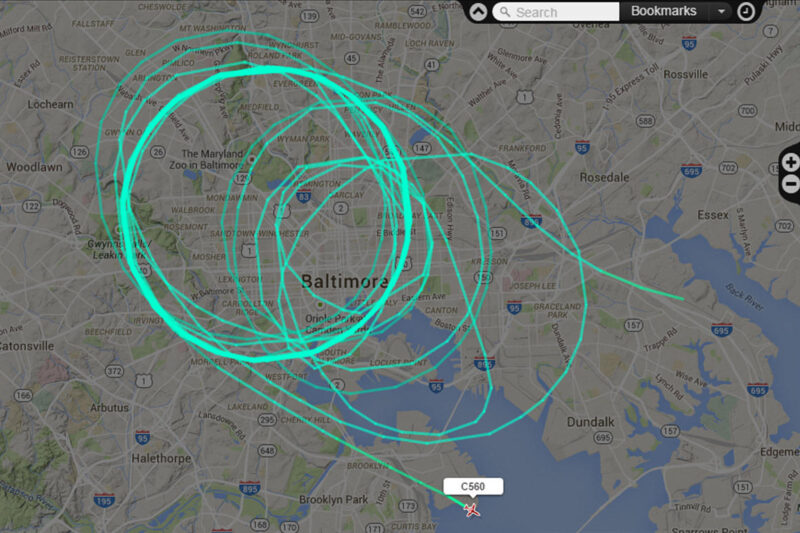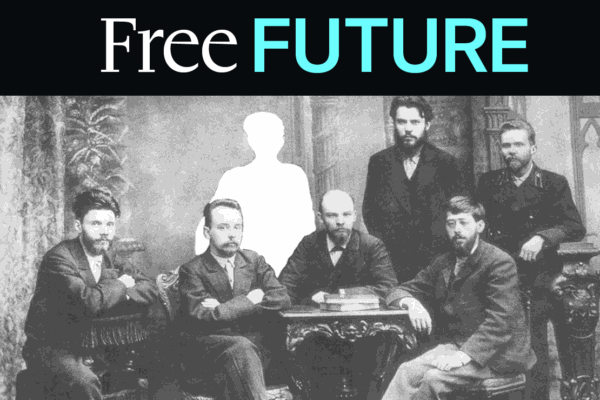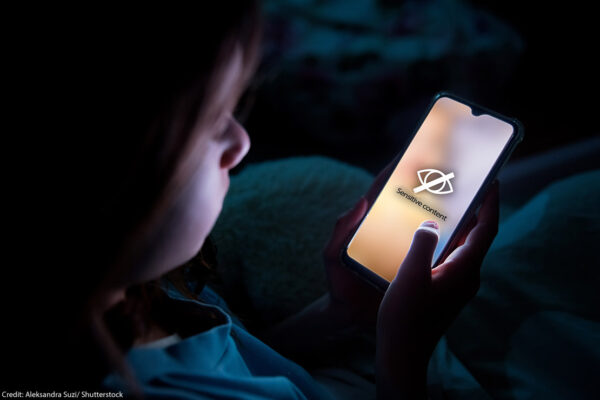
The director of the FBI confirmed to Congress last week that the agency flew surveillance aircraft over Ferguson, Missouri, and Baltimore during the protests following the police killings of Michael Brown and Freddie Gray. Today the ACLU is releasing FBI and FAA documents with new details about the Baltimore surveillance flights.
The new internal documents, obtained through Freedom of Information Act requests, reveal that the government was doing more than just monitoring the situation with regular cameras. The FBI was using advanced technology like infrared and night-vision cameras, and it is holding on to surveillance video it recorded from the sky.
As we explained when we first brought the Baltimore flights to light, FBI aircraft circling over West Baltimore during a period of intense protest and upheaval raises a number of significant questions, like what kind of surveillance equipment were they using, what data were they gathering and saving, with whom that information is being shared, and whether aerial surveillance has the effect of chilling First Amendment–protected speech and assembly. It also raises concerns about whether the intelligence gathered could lead to racial profiling of the protesters, who were predominantly people of color. These questions are all the more pressing now that we’ve learned the FBI flies a fleet of secret surveillance planes over cities across the country. The new records provide partial answers to some of these questions.
The documents show multiple flights during which the FBI conducted video surveillance and unspecified “other electronic surveillance.” According to its flight logs, the FBI flew 10 surveillance flights over Baltimore from April 29 through May 3, comprising a total of 36.2 flight hours. Most of the flights took place at night, and half of them carried a Baltimore Police Department representative in addition to FBI personnel.
FBI evidence logs reveal that at least half of the flights conducted video surveillance, and that the FBI retained copies of those videos in its files. Other flights conducted some type of “electronic surveillance,” but specific descriptions are redacted. This suggests that those flights were perhaps using more sensitive or powerful recording gear than just video cameras, though what kind we don’t know.
What we do know is that one of the aircraft, a Cessna propeller plane registered to an FBI front company, NG Research, had specialized surveillance camera equipment on board. FAA documentation shows that the FBI installed a Paravion Technology infrared camera mount and a FLIR Talon multi-sensor camera system on the exterior of the plane. The FLIR system includes a “thermal imager,” an optical camera, and a “laser illuminator” for recording at night. We did not receive documentation about the second plane observed circling over Baltimore, so we don’t know if it was carrying different gear.
In its Domestic Investigations and Operations Guide, the FBI takes the position that no Fourth Amendment protections apply to “aerial surveillance conducted from navigable airspace.” While that is an accurate statement of Supreme Court precedent when it comes to visual observation and use of normal cameras from a plane, it fails to grapple with the effect of advances in surveillance technology. Use of infrared and night-vision camera technology changes the equation by raising the potential for invasions of privacy. The capabilities of the surveillance gear matter. If the infrared camera is capable of observing information about the inside of private homes and offices, for example, the Supreme Court has already explained that the Fourth Amendment’s warrant requirement applies.
In an internal memo, the FBI justified the Baltimore surveillance flights in light of reports that “large scale demonstrations and protests” were being scheduled, and the “potential for large scale violence and riots.” (Oddly, some of the FBI documents describe the surveillance flights as “consensual monitoring,” though they fail to describe who consented — certainly not the protesters on the ground.)
There undoubtedly are times when aerial surveillance is an appropriate law enforcement tool for public safety or investigative purposes. But it is essential that accurate information about such surveillance be available to the public, and that strict rules be in place to protect against unjustified mass surveillance or warrantless collection of private information. As the government’s technological capabilities improve, we must ensure that old legal rules from the pre-digital era are not blindly applied to newer and more powerful forms of digital surveillance.
The documents:
FBI
FBI response letter
Memo justifying Baltimore surveillance flights and evidence logs
Flight logs
Excerpt from Domestic Investigations and Operations Guide
Bureau Aviation Regulations Policy Directive and Policy Guide
FAA
FAA Aircraft Registration Branch response letter
Registration documentation for plane N539MY
Airworthiness documentation for plane N539MY
FAA Systems Operations Services response letter



